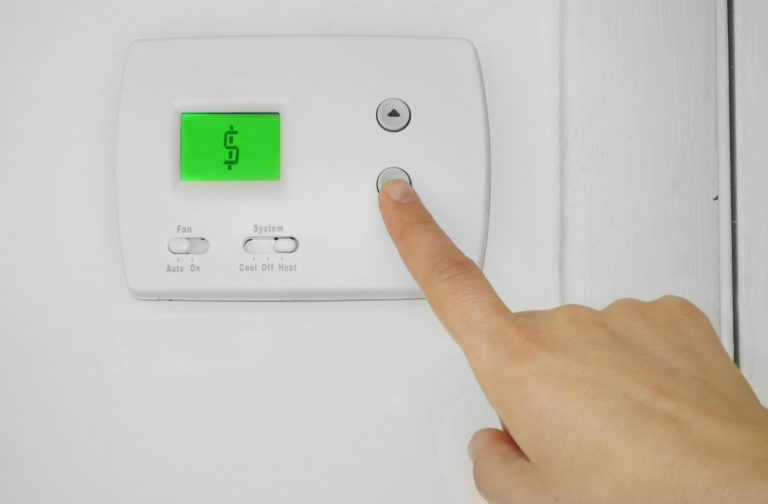How To Save Money On Your Heating Bill
What Are the Best Ways to Save on Your Heating Bill?
We're all familiar with Winnipeg's cold winters. Aside from moving south of the border, the experts at Furnasman are here to help you save on your heating bill. A high-efficiency furnace might be your first thought, but there are other ways you can save money aside from getting a new furnace.
Investing in a heat pump, improving your insulation, eliminating drafts, upgrading your thermostat, and scheduling regular furnace maintenance are some of the best ways to keep your heating costs low.
Improve Your Insulation
Improving your insulation will help reduce heat loss from your home, which will, in turn, help reduce your heating bill. Some areas to check your insulation include your walls, ceilings, floors, windows, and doors.
Walls & Ceilings
All insulation has an R-value rating. The higher the R-value, the better the insulation is. Better insulation can help prevent heat loss and save you money on your heating bill. While the fluffy pink insulation is often what we first think of when it comes to insulation, it’s not the only type that can save you money.
Floors
Floor insulation can also help with your heating bills. Make sure you have sufficient insulation between the base of your floor and your flooring. Choosing carpet over hardwood can help to insulate your home as well, especially on the ground floor or in your basement.

Windows & Doors
Doors and windows are a huge source of heat loss, sometimes even when they’re closed. Your windows should ideally be double or triple-paned to help prevent heat loss. Double-pane windows have two layers of glass with air between each layer, while triple-pane windows have three layers of glass. Air acts as a highly efficient insulator, so the air between the panes helps prevent heat loss.
Check for Drafts
Drafts usually happen because of small holes that let cool air in or because poor insulation allows heat to seep out rapidly. In a home with no drafts, heat will move slowly throughout your home in a convective loop. If there is a draft, the convective loop will move more quickly, causing gusts of cold air that we know as drafts.
The most common sources of drafts are doors and windows. If you suspect a draft, weatherstripping your doors and windows can help. However, Doors and windows aren’t the only culprits, so it’s important to look for other sources of heat loss around your home as well. Your home’s outer walls can be another source of drafts. Sealing any holes or gaps with caulking or improving your insulation can help with this type of draft.
Upgrade Your Thermostat
An upgrade to your thermostat can not only keep your home more comfortable, but it can save you money as well. A smart or programmable thermostat can help make sure you’re only heating your home when you need to, which saves you money.
A programmable thermostat allows you to keep your home cooler when you’re not home. Turning down the thermostat by a few degrees while you’re at work, for example, can save you money in the long run. Many smart home or wi-fi controlled thermostats can also be controlled from anywhere, allowing you to adjust the heat whenever you need, like if you’re out of town for the weekend.
Keep Up with Regular Maintenance & Cleaning
Regular furnace maintenance and cleanings help ensure that your furnace isn’t working harder than it needs to be. Replacing worn parts and removing buildup allows your furnace to run more efficiently, which translates into lower heating costs.
Changing your furnace filter regularly will also help. A filter that is clogged with debris will make it more difficult for air to circulate through your furnace, decreasing efficiency and increasing your bill. Make sure you change your furnace filter at least once every 3 months.
Consider a Heat Pump
Unlike a furnace, heat pumps don’t generate heat. Instead, heat pumps help distribute heat around your home more efficiently. If you have certain areas in your home that are always cold and other areas that are always hot, a heat pump will transfer the hot air to the cold area. By distributing heat across your home more evenly, a heat pump can help keep your home more comfortable and prevent you from turning up your thermostat just to stay warm.
Invest in a High-Efficiency Furnace
Of course, the more efficient your furnace is, the less energy it will require, translating into savings on your heating bill. Furnace efficiency is continuously improving, so a new furnace will be more efficient than an older model. However, a high-efficiency furnace will be even more efficient, with some models boasting efficiency of 98%, whereas an older furnace could only be 56% to 70% efficient.
The exact way high-efficiency furnaces save energy will vary depending on the model. For the most part, high-efficiency furnaces are fundamentally different in how and what they heat. High-efficiency furnaces have additional heat exchange surfaces, allowing them to extract more heat during the heating process. They also rely on sealed combustion and take fresh air from outside the home. By doing this, high-efficiency furnaces don’t siphon off warm air from your home only to reheat it.
Whether it’s with a new furnace or with checking for areas of heat loss around your home, there are many ways you can save money on your heating bill. If you're still unsure of how you can lower your heating bill, Winnipeg's heating experts are here to help. Contact Furnasman for a free in-home assessment.






